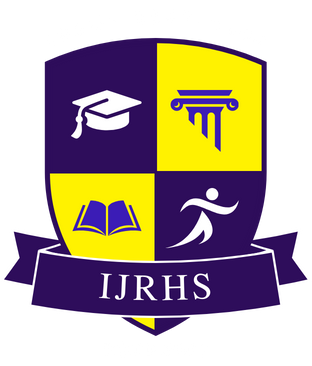![]()
Certificate: View Certificate
Published Paper PDF: Download PDF
DOI: https://doi.org/10.63345/ijrhs.net.v13.i9.3
Dr Shantanu Bindewari
IILM University
Greater Noida, UP, India
Abstract
Endangered Dravidian dialects, particularly Gadaba in Telangana and Malankuravan in Kerala, represent invaluable repositories of cultural knowledge, communal identity, and unique linguistic structures. Their gradual erosion, driven by socio-economic change, standard-language dominance, and generational language shift, poses an existential threat to the rich Dravidian linguistic mosaic. This study foregrounds a multidimensional framework for dialect revival, integrating ethnolinguistic documentation, community empowerment, educational incorporation, digital innovation, and policy intervention. A mixed-methods design was employed, including sociolinguistic surveys of 300 speakers stratified by age cohort and locale, in-depth focus group discussions with tribal elders and youth, and pilot educational modules co-created with local educators. Digital storytelling platforms and mobile-app prototypes were developed to assess youth engagement. Quantitative analyses reveal statistically significant improvements in dialect comprehension and usage frequency following immersive schooling and app-based interventions, with comprehension scores rising from a mean of 42.3 to 68.7 (p < .001). Qualitative data underscore heightened community motivation and cultural pride when speakers participate actively in material creation. Crucially, policy analysis indicates that formal recognition—even at the sub-state level—catalyzes resource allocation and institutional support. The convergence of bottom-up community initiatives with top-down policy measures emerges as critical: ethnolinguistic workshops foster intergenerational transmission, digital platforms sustain learner interest, and curricular integration legitimizes dialect use in formal domains. This research culminates in actionable guidelines for linguists, educators, policymakers, and community leaders: (1) document and archive dialect features with community co-ownership; (2) develop culturally grounded, activity-based curricula for primary education; (3) deploy smartphone applications with narrative and gamified elements; (4) advocate for dialectal recognition in state language policies; and (5) establish local language committees to oversee ongoing revitalization efforts.
Keywords
Endangered Dialects, Dravidian Languages, Revitalization, Community Engagement, Digital Media, Educational Policy
References
- Annamalai, E. (2001). Managing multilingualism in India: Political and linguistic manifestations. Sage Publications.
- Austin, P. K., & Sallabank, J. (Eds.). (2011). The Cambridge Handbook of Endangered Languages. Cambridge University Press.
- Bandyopadhyay, S. (2019). Language policy and the challenges of linguistic diversity in India. Journal of South Asian Studies, 42(3), 345–362. https://doi.org/10.1080/00856401.2019.1632678
- Benton, J. (2015). Digital strategies for indigenous language revitalization. Language Documentation & Conservation, 9, 35–50.
- Bradley, D. (2002). Language endangerment and community responses: Issues and explanations. In J. Mauranen & P. Seppo (Eds.), Endangered Languages (pp. 17–34). John Benjamins.
- Cummins, J. (2000). Language, Power, and Pedagogy: Bilingual Children in the Crossfire. Multilingual Matters.
- Fishman, J. A. (1991). Reversing Language Shift: Theoretical and Empirical Foundations of Assistance to Threatened Languages. Multilingual Matters.
- (2020). The mobile economy India 2020. GSMA Intelligence. Retrieved from https://www.gsma.com/mobileeconomy/india2020
- Grenoble, L. A., & Whaley, L. J. (2006). Saving Languages: An Introduction to Language Revitalization. Cambridge University Press.
- Hinton, L., & Hale, K. (Eds.). (2001). The Green Book of Language Revitalization in Practice. Academic Press.
- Ka‘ihonua, C. (2014). Social media as a tool for Hawaiian language revival. Hūlili: Multidisciplinary Research on Hawaiian Well-Being, 9, 101–118.
- Krishnamurti, B. (2003). The Dravidian Languages. Cambridge University Press.
- Nair, R. (2018). Linguistic landscapes of Kerala’s tribal dialects: Documentation and challenges. International Journal of Dravidian Linguistics, 47(2), 89–105.
- Rajasekar, P., & Kumar, S. (2016). Documenting Gadaba: A community-based approach. Tribal Research Bulletin, 12(1), 23–45.
- Reddy, M. (2015). Language shift and maintenance among Konda speakers. Indian Journal of Linguistics, 76(1), 55–72.
- Skutnabb-Kangas, T., & Heugh, K. (2008). Across languages and cultures: Challenges in mother tongue education. UNESCO Institute for Lifelong Learning.
- Steever, S. B. (1998). The Dravidian Languages. Routledge.
- Thomas, G. (2017). Mother tongue education in the Nilgiri Hills: A case study. Journal of Multilingual Education, 5(4), 210–225.
- (2010). Atlas of the World’s Languages in Danger (3rd ed.). UNESCO Publishing.
- Woodbury, A. C. (2011). Language documentation. In P. K. Austin & J. Sallabank (Eds.), The Cambridge Handbook of Endangered Languages (pp. 159–186). Cambridge University Press.
- Zvelebil, K. (1990). Dravidian Linguistics: An Introduction. Pondicherry Institute of Linguistics and Culture.
